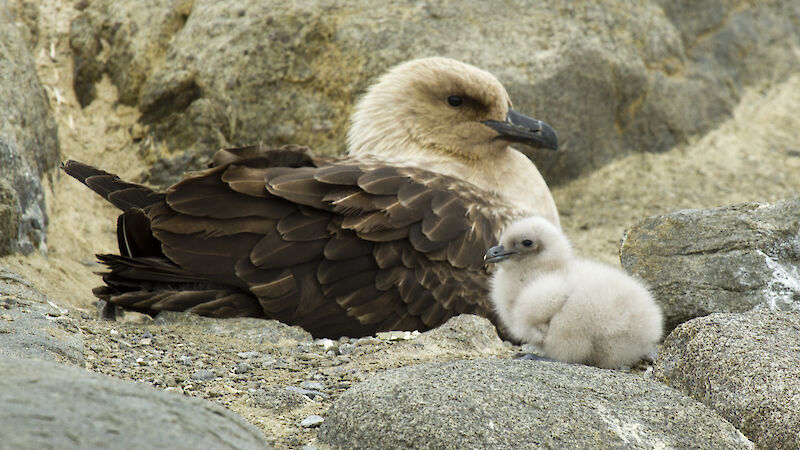Seabird experts working with the Australian Antarctic Program will travel to Antarctica this summer to monitor seabird populations for signs of the deadly avian influenza virus. Avian influenza, known as bird flu, has been around for decades but in 2020 a new highly pathogenic strain emerged (HPAI H5N1), resulting in severe disease and high mortality rates.

There have been no identified cases in Antarctica to date, but according to the Council of Managers of National Antarctic Programs (COMNAP), bird flu has been detected in birds and mammals in South America, South Africa and the Arctic “so the risk is heightened that HPAI will make its way to Antarctica by way of natural migration of species during the 2023/24 or the 2024/25 Antarctic seasons.”
Seabird ecologist Dr Louise Emmerson said the disease was highly transmittable between birds and was expected to arrive in the Falkland Islands, not far from Antarctica, when the migratory species returned to their breeding colonies.
“There are a range of bird species that have been affected and we know it can affect penguins as well as flying seabirds. Concerningly, it has also been found to occur in seals and rarely in humans.” she said.
“There are some colonies where it’s wiped out 75 per cent of the population so it is a very significant virus. There have literally been deaths of many hundreds of thousands of birds from this virus.
“Basically, this year our recommendation is to keep away from wildlife in Antarctica. Normally we would suggest expeditioners could sit quietly and enjoy the opportunity of a curious penguin coming close as long as they didn’t approach the penguin, but this year it is important to keep a distance.
“We’ll be running a monitoring program from back here (in Hobart) where we’ll ask expeditioners from all three Australian Antarctic research stations to take video footage to send to us, and we’ll have a look at it.
“We are also sending seabird research teams to Antarctica where they can take a closer look at the birds and make a call based on their extensive experience working with and around them and knowing what normal bird behaviour and colonies look like.”.
“If there’s any sign of sick or dying birds that we suspect is avian influenza, then we’ll close that area.”







